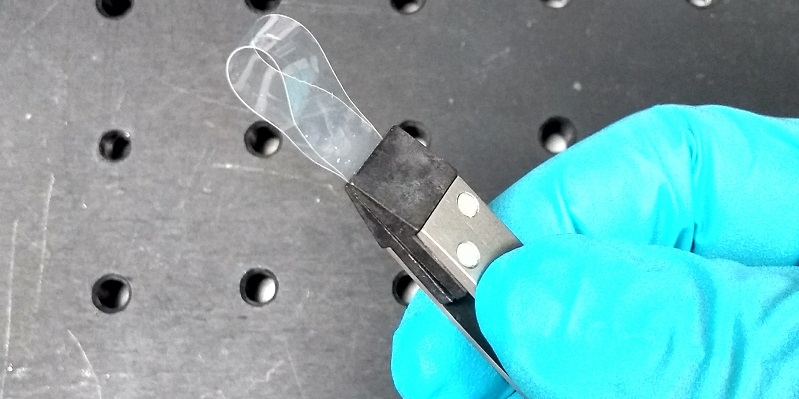
Leveraging a technique for making stained glass that dates back hundreds of years, a group of researchers at Aston University (Birmingham, UK) have developed a wholly modern weapon in the war against drug-resistant bacteria: A cobalt-infused bioactive glass that could potentially make surgical instruments and implants far less likely to cause infections.
Just how much less likely? The scientists who led the material’s development say they were able to achieve a “complete kill” of Candida albicans and E.coli and nearly wiped out Staphylococcus aureus (one form of which is MRSA, a particularly tenacious bacteria that’s probably most notorious for wreaking havoc on hospital patients and staff). The latter two are especially problematic, making the Center for Disease Control’s (CDC’s) list of the 25 most common healthcare-related infections — a problem that society struggles to address at a cost of more than $35 billion annually in the U.S. alone.
Bioactive glass is constructed of materials that can interact with biological tissue. In this case, the formula developed at Aston could eventually help tackle infections by coating surgical instruments and implants with an inexpensive material that actively fights the infections that those metal implements so often inadvertently trigger.
Seeing Value in Vibrant Blue
The Aston team stained small amounts of the element cobalt in their glass. As it naturally dissolved, the cobalt oxide mixed in the glass provided a controlled release of metal ions that broke down the cell walls of the bacteria studied; in fact, in an unexpected side effect, those ions even dispersed to kill other microbes that weren’t immediately adjacent to the bioactive material.
Yet while the cobalt played an important role in the development of the innovative glass, it was the Aston team’s use of a centuries-old technique often used for making stained glass that perhaps generated the more intriguing headlines (and timely ones, given renewed worldwide interest in stained glass following the April 15, 2019 fire in Paris’ Notre Dame Cathedral, during which the church’s iconic rose windows were spared).
To create their unique compound, Aston researchers heated a furnace to more than 1,000-degrees Celsius, inserted their compound into the furnace, pulled it out and quickly cooled it (to ensure it wouldn’t crystallize), and then reduced it to a fine powder. That powder was then added to petri dishes packed with the bacteria species studied in Aston’s research. The glass powder did its handiwork in less than 24 hours, giving researchers encouragement that cobalt could mimic the microbe-fighting properties found in past similar research that studied glasses laced with copper, zinc and silver.
Putting Bioglass Powder to Work
While the Aston team believes bioactive glasses could eventually be used to fight infections through biodegradable filling agents or even tissues, a more immediate — and especially valuable — common application could be in catheters. As many as 25 percent of hospitalized patients use urinary catheters during a hospital stay; and among urinary tract infections acquired in a hospital, three-quarters are associated with catheter use.
The material’s benefits might also shine most brightly during surgeries, keeping colonies of bacteria from forming a biofilm on surgical instruments.
“These glasses provide localized delivery at the surgical site to stop infections from forming in the first place. Once an infection has had time to establish itself it is much harder to treat, because complex bacterial biofilms start to form which are much tougher to tackle,” explained Richard Martin, PhD, study author and research at Aston’s School of Engineering and Applied Science. “With the rise of antimicrobial resistance, these glasses have the potential to radically transform how we guard against common hospital infections, because if we can stop the bacteria from multiplying it negates the need for heavy doses of antibiotics.”
If bioactive glass can be successfully commercialized, it could allow hospitals to use antibiotics more strategically and help prevent return trips to the hospital (particularly among especially vulnerable elderly patients).
In what other applications—both inside and outside hospitals—could bioactive glass contribute a clear advantage?
The Innovation, Inspiration & Ideas blog was created to share stories and profiles of companies, products and individuals creating innovation in business through inventive material solutions. For more information on why we launched it, read our blog introduction.
Also in University Research:

Bees Provide Solution to Adhesive Failure
in University ResearchAdhesive can present a problem in high-humidity or low-humidity climates, but Georgia Tech researchers may have found a sticky solution by looking at honey bees. Bees collect pollen and carry… Read More

New Material Thickens When Stretched
in University ResearchResearchers from the University of Leeds have discovered a new, synthetic, nonporous material that gets thicker as it is stretched. This is the first synthetic material that is inherently auxetic… Read More
